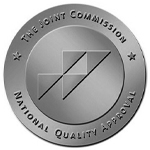
Those who have suffered from foot and ankle pain know the burden it causes. Everyday tasks that require standing or walking can become extremely difficult, and the pain can greatly affect a person’s quality and enjoyment of life. One of the most common causes of foot pain is plantar fasciitis.
Dr. David Pagnanelli Jr. of Keystone Foot and Ankle Center frequently treats patients with this condition and wants people to know they don’t have to live with this pain – help is available.
What is plantar fasciitis and what causes it?
Plantar fasciitis is inflammation of a thick band of tissue from the inner side of your heel to your toes. This band supports and holds up your arch in your foot. Sometimes it becomes so inflamed and tensed that you can get micro tears or even complete tears of the tissue.
What are the symptoms?
Symptoms include pain with the first step in the morning or after sitting/resting for some time, stabbing, sharp pain with walking, aching within the heel bone, aching with standing in place for long periods of time, and tight calf muscles.
Who is most at risk of developing it?
Plantar fasciitis is most often seen in people who have flat feet and do not wear orthotics or arch supports. Runners are typically most at risk. In addition, people who are overweight and those who wear shoes with inadequate support or no shoes at all on hard surfaces have an increased risk of plantar fasciitis.
Why is it important to seek treatment sooner rather than later?
Plantar fasciitis can lead to the formation of bone spurs as well tears within the fascial band which may require surgery. The inflammation can also cause pressure on adjacent nerves and muscles which can increase pain and cause temporary or permanent damage. The pain will likely not go away until the proper support or therapy is given.
What are the treatments and when is surgery needed?
I treat plantar fasciitis aggressively from the start. On average, 95% of my patients get better without surgical intervention. On the first visit you will get an x-ray to check for bone abnormalities and the overall alignment of your joints. Then, depending on the pain level and inflammation present, you may get a steroid injection to reduce the inflammation and pain. You will get stretching exercises to help reduce the tension and pull on the fascial band and Achilles tendon. The stretching exercises are the most important part of the treatment protocol. You will likely get athletically taped with a Lodi Taping. You may also get a night splint as well as a heel cushion.
You may require up to three injections, spaced two to three weeks apart, to relieve all the pain and inflammation. Some patients only require one injection, but others require a series. During this time, on the second visit, if the athletic taping helped with the pain we know then that custom orthotics will help consistently relieve the pain and support the fascial band. You will then be casted for custom orthotics. Some over-the-counter orthotics might be sufficient given the shape and alignment of your feet.
It may also be necessary in severe cases to send the patient to aggressive physical therapy to help loosen and stretch out the plantar fascia. Surgery is performed if complete relief of pain is not achieved with conservative therapy and orthotics. Surgery consists of endoscopically cutting the medial 1/3 of the plantar fascia. It is a 10-15 minute procedure with two ½ inch scars on either side of the heel. The patient can walk out of the surgery with a surgical shoe or large boot and will be back in shoes in three to four weeks.
Are there ways to reduce the pain with lifestyle changes?
Avoid walking barefoot or on hard surfaces. Try to always wear orthotics or arch supports. Stretching on the calf muscles daily, twice a day, will help reduce the tension of the plantar fascia.
This article contains general information only and should not be used as a substitute for professional diagnosis, treatment or care by a qualified health care provider.




